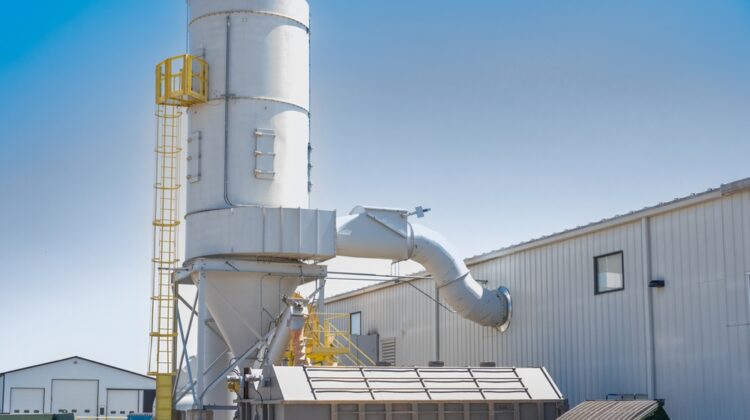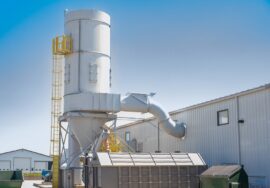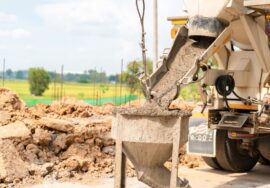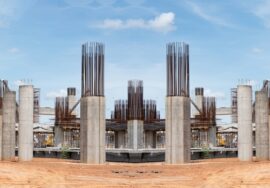
Construction Pollution Control for a Cleaner Future
Construction Pollution Control for a Cleaner Future
The construction industry is one of the largest contributors to environmental pollution worldwide. From dust and noise to waste and emissions, building activities significantly impact air, water, and soil quality. Implementing effective construction pollution control measures is therefore essential to achieve sustainability, protect ecosystems, and improve public health.
By integrating construction pollution control into every phase — from design to demolition — companies can minimize their environmental footprint while ensuring regulatory compliance and long-term efficiency.
What Is Construction Pollution Control?
Construction pollution refers to the strategies and technologies used to reduce the negative environmental effects of building activities. These include air pollution, water contamination, noise pollution, and waste generation.
The goal of construction pollution is to promote sustainable building practices that conserve natural resources, reduce emissions, and protect the health of both workers and nearby communities.
Types of Pollution in Construction
Construction projects can generate multiple types of pollution if not properly managed. Understanding these helps in applying effective control measures.
1. Air Pollution
Dust from excavation, concrete mixing, and vehicle movement is a major source of air pollution. Using dust control measures, low-emission equipment, and green materials can greatly reduce this problem.
2. Water Pollution
Construction sites often produce runoff that carries sediments, oil, and chemicals into water bodies. Implementing water pollution prevention systems like sediment traps and proper drainage can prevent contamination.
3. Noise Pollution
Heavy machinery, drilling, and demolition activities cause high noise levels, disturbing nearby residents. Noise pollution management through sound barriers and equipment maintenance is essential for a sustainable worksite.
4. Soil Pollution
Improper disposal of construction waste or chemicals can contaminate the soil. Safe storage, recycling, and treatment of materials help maintain soil health.
Key Construction Pollution Control Strategies
Effective construction pollution involves proactive planning and the adoption of eco-friendly technologies. Below are some proven strategies:
1. Dust Suppression
Regular water spraying, using dust screens, and maintaining clean site roads can help minimize air pollution.
2. Waste Management
Sorting and recycling construction waste reduces landfill impact. Using recycled materials and green construction practices lowers pollution levels.
3. Low-Emission Equipment
Switching to electric or hybrid machinery supports low-emission construction, cutting down on harmful greenhouse gases and improving air quality.
4. Water Management
Installing rainwater harvesting systems and using sediment control measures prevent contamination and promote water conservation.
5. Noise Reduction
Using quieter machinery, scheduling noisy activities during daytime, and installing noise barriers protect workers and residents from excessive noise.
Importance of Construction Pollution Control
Implementing construction pollution measures benefits both the environment and business operations:
-
Improved Environmental Impact: Reduces air, water, and noise pollution.
-
Regulatory Compliance: Meets environmental laws and green certification requirements such as LEED certification.
-
Health and Safety: Protects workers from exposure to harmful pollutants.
-
Sustainability Goals: Promotes sustainable construction methods and eco-friendly design.
-
Enhanced Reputation: Companies adopting pollution control gain trust as responsible builders.
In short, construction pollution control is not just about compliance — it’s about creating a positive environmental legacy.
Pollution Control and Sustainable Construction in India
In India, rapid urbanization and infrastructure growth have made construction pollution a national priority. The Central Pollution Control Board (CPCB) and the Ministry of Environment have issued strict guidelines for dust suppression, waste disposal, and emission reduction on construction sites.
Green building organizations such as the Indian Green Building Council (IGBC) also encourage sustainable construction practices that focus on pollution prevention, resource efficiency, and low-carbon materials.
By following these frameworks, Indian developers can contribute to cleaner, greener cities while maintaining productivity.
Integrating Construction Pollution Control with Smart Design
Modern construction pollution doesn’t stop at equipment upgrades — it begins at the design phase. By adopting passive design, smart building technology, and energy-efficient systems, architects can drastically cut resource consumption and emissions before construction even begins.
These strategies, combined with sustainable landscaping and urban sustainability initiatives, can make cities more livable and resilient against climate change.

Partner with Experts in Sustainable Construction
Implementing construction pollution requires expertise, technology, and commitment to sustainability. At AMS India, we specialize in environmentally responsible construction solutions that minimize pollution, enhance building performance, and support long-term sustainability goals.
Our team integrates resource-efficient practices, smart technologies, and eco-friendly materials to help your projects meet both environmental and operational standards.
Conclusion
Construction pollution is a cornerstone of sustainable development. By reducing emissions, managing waste, and conserving resources, the construction industry can build responsibly without compromising growth.
As environmental awareness grows, integrating pollution control measures will not only protect the planet but also create healthier, safer, and more efficient spaces for future generations.
Read more related articles to enhance your knowledge and make informed decisions
Cost-Effective Modular Construction: Fast, and Sustainable Building Solutions
Smart Modular Buildings: Innovative, Efficient, and Sustainable Construction








